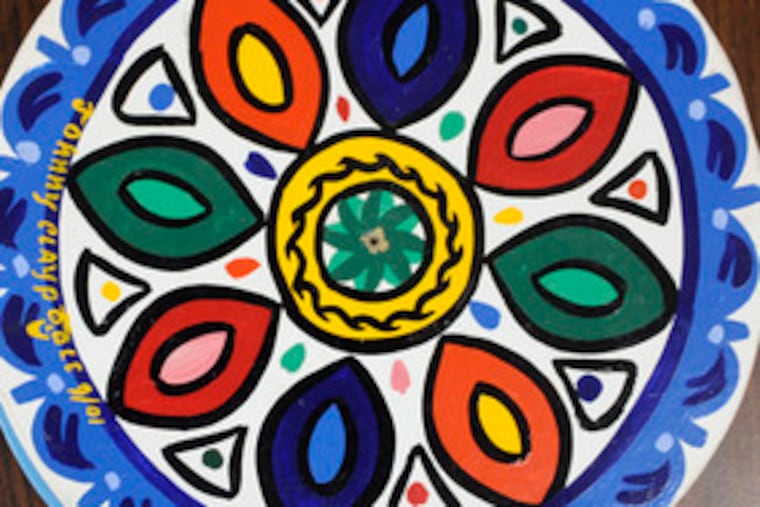
READING - Eric Claypoole has been around hex signs since he was 5, but there's one question he still can't answer: Why do the Pennsylvania Dutch paint them on their barns?
In essence, said Claypoole, a Lenhartsville artist and arguably the preeminent hex-sign painter in the country, there are two schools of thought.
One says hex signs are intended to ward off evil.
The other, as Claypoole said in Pennsylvania Dutch parlance, is simpler: "They're just for nice."
Mystical or decorative, hex signs are fascinating. And Berks County may be the hex-sign capital of the United States.
Rural landscapes, even amid an assault from housing developers, remain dotted with Pennsylvania barns emblazoned with stars and hex signs painted 150 years ago.
Claypoole, 47, inherited the art from his father, the late Johnny Claypoole of Lenhartsville, and took over Claypoole Hexsigns about 10 years ago. He concedes he's no historian; he gathered his considerable knowledge informally.
Though hex signs use many of the symbols of Fraktur, the German lettering often used on birth and marriage certificates, they appear to be an American phenomenon for the most part.
Few hex signs are found in Germany's Palatinate, the region from which the Pennsylvania Germans emigrated, Claypoole said.
Many of Berks County's hex signs were painted after the Civil War, historians claim, but Claypoole has found 30 or so that predate the war.
"The oldest one I've found is a six-point star painted on the gable end of a Lenhartsville barn in 1819," he said.
There's a difference between hex signs and barn stars. Hex signs are painted on boards fastened to barns, and barn stars are painted directly on the barn, he said. Eight- and 12-point stars are most common.
Twelve-point stars signify the 12 apostles of Jesus, Claypoole said, and 13-point stars, which are rare, symbolize Jesus and the apostles.
Colors and shapes are important in hex signs. White stands for purity, a circle for unity. Rosettes, tiny cross-shaped emblems, are believed to represent God looking down on a flower.
Wallace Nutting, a renowned artist and photographer, is credited with coining the term
hex sign
. In his book
Pennsylvania the Beautiful
, Nutting used the term
hexafoos
, which translates roughly to
witch's foot
.
A witch's-foot design was painted beneath barn windows to make them appear larger. A witch flying into the barn, superstition holds, would misjudge the size of the window and trip on it, Claypoole explained.
Claypoole debunked the notion that hex signs are Amish or Mennonite in origin, as often stated on the Internet. They're strictly Pennsylvania Dutch, he said.